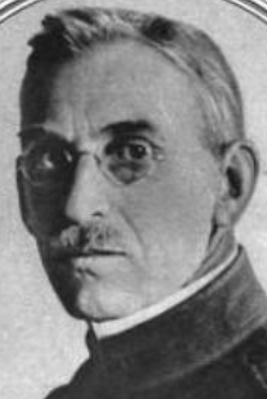Henry Jervey Jr. facts for kids
Quick facts for kids
Henry Jervey Jr.
|
|
|---|---|
 |
|
| Born | June 5, 1866 Dublin, Virginia |
| Died | September 30, 1942 (aged 76) Charleston, South Carolina |
| Buried | |
| Allegiance | |
| Service/ |
|
| Years of service | 1888–1922 |
| Rank | |
| Unit | 41st Infantry Division 11th Field Artillery Brigade |
| Wars | Philippine–American War World War I |
| Awards | Distinguished Service Medal Companion of the Order of the Bath Commander of the Legion of Honor Grand Officer of the Order of Leopold Member of the Order of the Crown |
Henry Jervey Jr. (June 5, 1866 – September 30, 1942) was an American major general during World War I. In 1917, he wrote the book Warfare of the Future.
Early life and education
Jervey was born on June 5, 1866. He attended The University of the South, graduating in 1884. He attended United States Military Academy and graduated first in the class of 1888.
Military service
Three years after graduating from USMA, Jervey graduated from the Army Engineering School of Application. Following that, he worked in various civil engineering roles with the US Army Corps of Engineers, improving the Mississippi River from 1898 to 1899, and managing rivers and harbors on the west coast of Florida from 1899 to 1900.
From 1901 to 1903, Jervey served in the Philippines during the Philippine–American War in an undocumented capacity. Afterwards, he was an instructor at USMA from 1903 to 1905.
Jervey returned to engineering work in 1905, managing rivers, harbors, and defenses of the Mobile District. In 1910 he was assigned to river duty in Cincinnati. He returned to instruction in 1915, serving as an instructor at the Army War College.
In 1917 he was promoted to Brigadier general and assigned to the 66th Field Artillery Brigade, a unit in the 41st Infantry Division (United States). Shortly after, he assumed command of the entire division from September 20, 1917 to January 8, 1918. Following that, he did a brief stint as the commandant of U.S. Army Engineer School (the former Army Engineering School of Application). In February 1918, he was moved to the War Department General Staff where he was made Director of Operations (G-3). This led to his promotion to Major general in October 1918. He was decorated with the Distinguished Service Medal for his service as Director of Operations. Following the end of the war in November 1918, he was reverted to his previous rank of Brigadier general and assumed command of the 11th Field Artillery Brigade in Hawaii. Jervey retired on April 10, 1922.
During his service, he wrote one book, Warfare of the Future, which was published in 1917, prior to the outbreak of World War I and his promotion to Brigadier general. In it, he states that the US would not be likely to send expeditionary forces to another country if drawn into a conflict with a "first-rate" power, a prediction that would be proven false only a few months later.
His Major General rank was restored by Congress in 1930.
Personal life
On November 14, 1895, he married Katherine Irwin. With his wife, they had a son named William Jesson Jervey. Katherine died in 1929. William Jervey would go on to become a Colonel.
Jervey remarried Henriette Postell on March 19, 1930.
Death and legacy
Jervey died on September 30, 1942 in South Carolina. He is buried in Arlington National Cemetery alongside his first wife and son.

